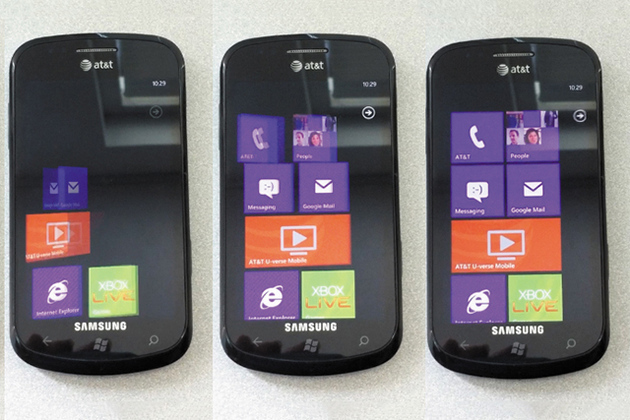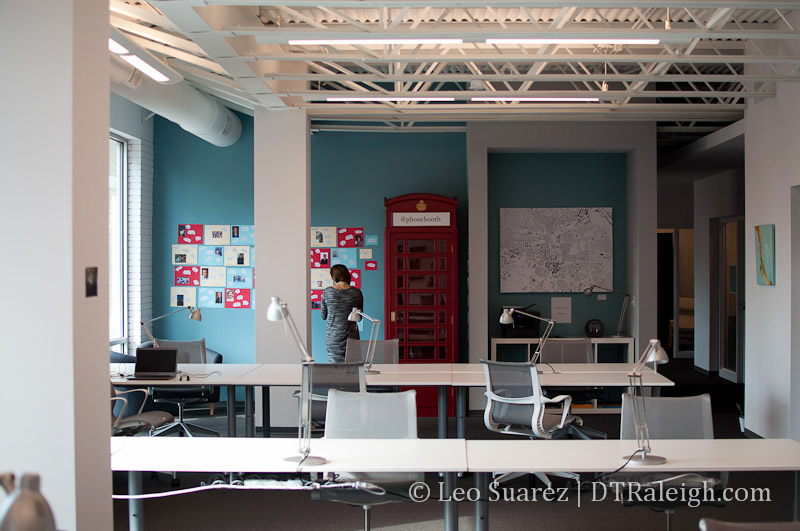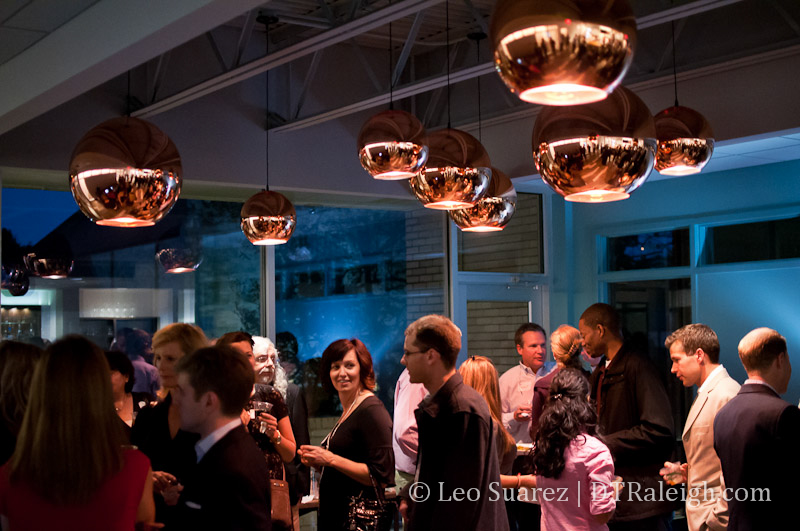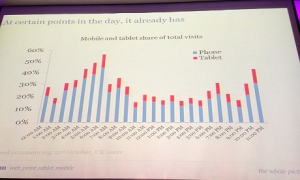Wednesday, November 28, 2012
Monday, November 26, 2012
Spotted: The Web Won't Be Safe or Secure until We Break It
The Web Won't Be Safe or Secure until We Break It
Unless you've taken very particular precautions, assume every Web site you visit knows exactly who you are.Spotted: Browser Security Case Study: Appearances Can Be Deceiving
Browser Security Case Study: Appearances Can Be Deceiving
A discussion with Jeremiah Grossman, Ben Livshits, Rebecca Bace, and George Neville-NeilCompetition: apps for NC State EI's Silicon Valley trip due tomorrow
NC State EI (@ncsuei)Don't forget! Applications to participate in the EI's Spring Break trip to Silicon Valley are due tomorrow at noon! tinyurl.com/d2cypox |
Find: How mobile is taking over our computing load, hour by hour
How mobile is taking over our computing load, hour by hour
Although mobile has been coming on strong as a primary means of computing, it still lags overall desktop internet usage. But for some publishers who started on the web, there are already moments during the week when mobile drives the majority of traffic or sales.
The Guardian’s Anthony Sullivan, group product manager for Guardian Core products at Guardian News & Media, said Monday that mobile — both smartphones and tablets — now contributes about 35 percent of traffic overall. That’s up from 10 percent at the start of 2011, when it was primarily smartphone traffic. (See disclosure below)
But at 6 a.m. to 7 a.m. in the morning local time, the Guardian gets more traffic from mobile devices. It also sees more mobile visitors than desktop visitors on Saturdays at 3 p.m. when the Premier League is under way.
Meanwhile, online design store Fab.com said late last month that on Saturdays between 12:00 a.m. and 6 a.m. local time, it sees 53 percent of its sales from mobile devices. On recent weekends, sales from mobile devices are now up to 40 percent, with weekend mornings before noon leading the way. Saturday evenings are also very popular with mobile users, with 44 percent of users buying on mobile devices between 6 p.m. and midnight.
The numbers are still early and these two properties are pretty popular with mobile users. Sullivan said in a Guardian story that the tipping point in favor of mobile might still be two years away. Fab’s CEO and co-founder Jason Goldberg, however, said based on the fast growth of mobile sales, he believes that Fab will see more parts of the day in which traffic from mobile devices goes over 50 percent in the coming months. And he said mobile will contribute more sales than desktop on certain days “soon.” Currently, 33 percent of Fab’s sales come from mobile devices.
The numbers underscore why mobile is so powerful. And it highlights the continuous nature of computing these days. The reality is today we are constantly on some type of computer throughout the day, moving back and forth between devices for different tasks and different settings. Mobile devices fill in the times when reaching for a laptop or desktop is more difficult, including early mornings, during lunch, as we settle in for the night and during the weekends....
Find: The state of broadband in the U.S.
The state of broadband in the U.S. [infographic]
For many people, their broadband connections are their lifelines. So what is the state of broadband in the U.S.? Well, when it comes to speed and price and adoption, we’re certainly not a leader — “middling” is a better way to describe our position.
Currently 119 million people that live in the U.S. don’t have broadband connections (for many reasons, including not wanting it or not being able to afford it) while 19 million don’t even have the option to get it. Our rate of broadband adoption (62 percent) lags behind countries such as South Korea, the U.K.,and Germany, according this year’s Federal Communication Commission report. (We’re closer to the penetration rates to Japan, Finland, and Canada.) These numbers are not likely to change soon, given that broadband growth is slowing and providers are moving away from wireline infrastructure.
Pricewise, we’re not in the top 10 in any speed tier, and in the in the highest tier — 15-25 Mbps — we’re 26th out of 32 countries. Hong Kong and Denmark both have cheaper internet — and faster average broadband speeds.
In this infographic, we highlight some key facts on broadband in the U.S. We obtained the data from the FCC, the National Broadband Map and Akamai.
ADOPTION
196.7 million (62%)
Americans who have broadband
15th
rank in wired broadband adoption per capita

Green denotes areas with at least two wireline broadband providers. Click to see how well your area is covered by both wireline and wireless broadband providers. Source: National Broadband Map.
SPEED
6.6 Mbps
9th
U.S. broadband speed rank worldwide
Wednesday, November 21, 2012
Find: Google rallies opposition to UN takeover of Internet governance
Google rallies opposition to UN takeover of Internet governance
The world's leading search company has decided to come out swinging against an effort by the International Telecommunications Union (ITU), the telecommunications arm of the United Nations, to seize a larger role for itself in Internet governance.
"There is a growing backlash on Internet freedom," Google says on its website. "Forty-two countries filter and censor content. In just the last two years, governments have enacted 19 new laws threatening online free expression."
Google worries that these censorious governments could use the upcoming World Conference on International Telecommunications, which starts December 3, as an opportunity to grab more authority over the Internet. "The ITU is the wrong place to make decisions about the future of the Internet," Google argues.
Find: How Team Obama's tech efficiency left Romney IT in dust
How Team Obama's tech efficiency left Romney IT in dust
Despite running a campaign with about twice the money and twice the staff of Governor Mitt Romney's presidential bid, President Barack Obama's campaign under-spent Romney's on IT products and services by $14.5 million, putting the money instead into building an internal tech team. Based on an Ars analysis of Federal Election Commission filings, the Obama campaign, all-inclusive, spent $9.3 million on technology services and consulting and under $2 million on internal technology-related payroll.
The bottom line is that the Obama campaign's emphasis on people over capital and use of open-source tools to develop and operate its sophisticated cloud-based infrastructure ended up actually saving the campaign money. As Scott VanDenPlas, lead DevOps for Obama for America put it in an e-mail interview with Ars, "A lesson which we took to heart from 2008 [was that] operational efficiency is an enormous strategic advantage."
The Romney campaign spent $23.6 million on outside technology services—most of it on outside "digital media" consulting and data management. It outsourced most of its basic IT operations, while the Obama campaign did the opposite—buying hardware and software licenses, and hiring its own IT department. Just how much emphasis the Obama campaign put on IT is demonstrated by the fact that the campaign's most highly paid staff member was its CIO, Michael Slaby, with an annualized salary of about $130,000...
Monday, November 19, 2012
Announcement: Course evaluation is up!
Course evaluation is up and running for Fall 2012! Please make sure to go there soon and evaluate this course; it'll help me make improvements for your fellow students in the next course.
Evaluation closes on December 5 at 8am.
Best,
Ben
Thursday, November 15, 2012
Guest: More from Jason Casden in-browser storage talk

Hi Ben,
Thanks for inviting me to talk about in-browser storage today. To give a bit more context to the browser vendor fragmentation, here is a browser storage discussion involving BrendanEich from Mozilla: http://news.ycombinator.com/item?id=2982990 The most publicized objection is that WebSQL was a standard bound to
just a single underlying implementation (SQLite). It seems that there
might have also some architectural objections, since the replacement
(IndexedDB) implements such a different model. I think they can both
work well from a technical perspective--it's just the fragmentation
that can be frustrating. By the way, caniuse.com can be useful when
sorting our browser support issues: http://caniuse.com/sql-storage
http://caniuse.com/indexeddb
http://caniuse.com/namevalue-storage Jason
Guests: Alan Cox and David Motsinger of WebAssign will visit on 12/13
Alan Cox (director engineering) and David Motsinger (CTO) of WebAssign will visit us during final presentations on December 13.


Guests: Lee Eason and Brendan Blackwood of WebAssign visit on 11/29
Lee Eason and Brendan Blackwood (both software engineers) will visit us from WebAssign on 11/29.


Guests: Chrissy Justice and Ben Clark of WebAssign on 11/20
Chrissy Justice (QA analyst) and Ben Clark (UX designer) of WebAssign will sit in on critique next Tuesday, 11/20.
Tuesday, November 13, 2012
Sunday, November 11, 2012
Find: OpenNews - the future of reporting is at the growing intersection of news, storytelling and web tech
OpenNews: looking back, moving forward.
This is the second of three posts about the state of development in journalism, where we’re at with the Knight-Mozilla OpenNews project, and where we’re going. It caps off on Thursday with the announcement of the 2013 Knight-Mozilla Fellows, an announcement that then launches us into the Mozilla Festival in London, starting Friday
 With the Mozilla Festival approaching in just two days, and the announcemnet of our 2013 Fellows happening tomorrow, it’s a nice moment to reflect on how far the Knight-Mozilla OpenNews project has come in 2012 and where we’re going in 2013.
With the Mozilla Festival approaching in just two days, and the announcemnet of our 2013 Fellows happening tomorrow, it’s a nice moment to reflect on how far the Knight-Mozilla OpenNews project has come in 2012 and where we’re going in 2013.
Writing this in the looming shadow of a trans-Atlantic flight to London for the Mozilla Festival, it’s actually pretty overwhelming just how far our project has transformed since I “thought out loud” about opportunites in the intersection of journalism and tech prior to last year’s Mozilla Festival. So it’s time for a little more thinking out loud, both about where we’ve been this year, and where we’re going next.
OpenNews 2012: there and back again
Back in February, we announced a new name and an “evolved” focus for the newly-christened Knight-Mozilla OpenNews project. The idea was to keep our Fellowship program intact, but to build out a much larger program dedicated to growing the community around coding and journalism. Here’s how we did:
Hack Days: We went into 2012 with a new initiative to sponsor, promote, and support hack days around the world that adopted journalistic themes. I firmly believe that if you want to grow the community around tech and journalism, you need to engage people in a way that demonstrates this is a place hackers, developers, and engineers want to play. Hack days are incredibly effective in doing that, and here as we approach the end of year, we will have helped sponsor more than 20 hack days around the world, with over 2000 participants.
Source: Throughout 2012, I’ve been incredibly lucky to work with the talented Erin Kissane and Ryan Pitts to create Source, a website designed to be a centerpoint for the journo-code community. Launched last month after being in a public beta since the Summer, we’ve been able to collect looks at how news devs reacted to Hurricane Sandy, dis...
Saturday, November 10, 2012
Find: Get started at no cost with a faster, larger Cloud SQL database
Get started at no cost with a faster, larger Cloud SQL database

By Joe Faith, Product Manager Cross-posted with the Official Google Enterprise Blog You want your applications to be fast, even with millions of users. Anytime your user tries to retrieve information from the app or update settings, it should happen instantly. For the best performance, you need faster, larger databases - especially if you have a growing user base to serve. Google App Engine is designed to scale. And now Google Cloud SQL—a MySQL database that lives in Google’s cloud—has new features to meet the demand for faster access to more data. With today’s updates, you can now work with bigger, faster MySQL databases in the cloud:
- More Storage: We’re increasing the available storage on Cloud SQL to 100GB – ten times more than what used to be available.
- Faster Reads: We’re increasing the maximum size of instances to 16GB RAM, a 4 times increase in the amount of data you can cache.
- Faster Writes: We’re adding functionality for optional asynchronous replication, which gives the write performance of a non-replicated database, but the availability of a replicated one.
- EU datacenter availability: Now you can choose to store your data and run your Cloud SQL database instance in either our US or EU data centers.
- Integration with Google Apps Script: We’re making it quick and easy for businesses using Google Apps to use Cloud SQL. Publish and share data with Google Sheets, add data to Google Sites pages or create simple Google Forms without worrying about hosting or configuring servers.
Introducing a new trial offer Many of you have requested a trial offer to test out Cloud SQL. Today, we’re introducing a 6- month trial offer at no charge, effective until June 1, 2013. This will include one Cloud SQL instance with 0.5 GB of storage. Sign up now and get started on Cloud SQL at no cost. Joe Faith is a Product Manager on the Google Cloud Team. In a previous life he was a researcher in machine learning, bioinformatics, and information visualization, and was founder of charity fundraising site Fundraising Skills. Posted by
Thursday, November 8, 2012
Find: applying animation principles to mobile UI design
The illusion of life: applying animation principles to mobile UI design

In 1981, Disney animators introduced the world to the 12 basic principles of animation. For many, the 12 rules are held in the same esteem as Dieter Rams' ten principles of good design, and are seen as something of a bible to would-be animators. In a chapter in her book, The Mobile Frontier, Rachel Hinman looks at how the Disney principles can also be applied to mobile UI and game design, pulling in examples from Apple, Microsoft, Google, Palm, and more. Hinman believes that motion is all-important in mobile design, and highlights how transitive animations and other techniques can help bring a little "magic" into a mobile user experience. The full chapter has been published online by Smashing Magazine, while the book itself is available.
Guest: Jason Hibbets of Redhat on Nov 20
Jason Hibbets of Redhat will visit us for critique on November 20. Jason is a project manager and involved in open source and community activism, including CityCamp and Southwest Raleigh.


Example: ESPN Fantasy Football
Wednesday, November 7, 2012
Find: HUB Raleigh Contributes To The Evolution of Co-working in Downtown
HUB Raleigh Contributes To The Evolution of Co-working in Downtown

Last week, HUB Raleigh had its official grand opening. This co-working space on Hillsborough Street adds to the growing startup scene and Innovate Raleigh initiative that continues to spread around downtown Raleigh. The space is set up for established startups in the area to work from so that they can tap the greater HUB network for future growth. I went to the packed grand opening party and returned the next day for a visit.
We’ve talked about co-working before and while I myself do not work for a startup, the community aspect around a co-working space is a natural fit for downtown. Both sides can benefit from the social aspect at HUB and the close proximity to the services in the downtown districts.
I like to compare co-working to the idea of our “third place.” There’s where you live, (first) where you work, (second) and your regular place to socialize. (third) This is a theme that is very alive and true for downtown regulars. With co-working, the community aspect of a third place is weaved into the work aspect of the second. For most, this creates relationships, personal and business, that really help create new businesses and bring ideas into creation.
Others just want to get out of the house and that’s fine too.

HUB Raleigh is slowly trying to create that community between visitors and users. For example, they have a calendar where anyone can post an event from business to social. The Click Cafe is the HUB’s on-site gathering space for breaks over food and drinks. And as community goes, HUB has members that are active in Durham’s startup scene and other places around the triangle. HUB contributes to what is going on in the triangle rather then compete and possibly take away.
I mentioned the HUB network that members are a part of. HUB is part of a 28 location network, mostly with locations in North America and Europe, where members have access to those locations and the community around it. If a startup in Raleigh decides to work in San Francisco, HUB San Francisco is now a place for them to reach to if needed. This network helps startups ease into different areas and HUB Raleigh helps visitors ease into here.
Growing startups like The ...
Sunday, November 4, 2012
Find: 'Pinch' connects multiple smartphones and tablets together to make a display
'Pinch' connects multiple smartphones and tablets together to make a display
 Not content with synchronizing your phones to make one giant speaker? Researchers at the Tokyo University of Technology have developed "Pinch," an interface that lets you connect multiple devices together to form a giant disjointed display. Although the technology behind the interface remains a mystery — described only as a Wi-Fi based system — a video posted by DigInfo TV shows Pinch in action. To connect two devices, a user simply needs to pinch two adjacent screens together. The screens can be linked together in whatever alignment you choose, as the position and screen size of each display is communicated on a successful pinch. It's not the first time developers have managed to link together multiple smartphone displays, but this...
Not content with synchronizing your phones to make one giant speaker? Researchers at the Tokyo University of Technology have developed "Pinch," an interface that lets you connect multiple devices together to form a giant disjointed display. Although the technology behind the interface remains a mystery — described only as a Wi-Fi based system — a video posted by DigInfo TV shows Pinch in action. To connect two devices, a user simply needs to pinch two adjacent screens together. The screens can be linked together in whatever alignment you choose, as the position and screen size of each display is communicated on a successful pinch. It's not the first time developers have managed to link together multiple smartphone displays, but this...Friday, November 2, 2012
Find: Firefox gets strict about enforcement of HTTPS protection
Firefox gets strict about enforcement of HTTPS protection
Developers of Mozilla's Firefox browser are experimenting with a new security feature that connects to a specified set of websites only when presented with a cryptographic certificate validating the connection is secure.
A beta version of the open-source browser contains a list of sites known to deploy the HTTP Strict Transport Security mechanism that requires a browser to use the secure sockets layer or transport layer security protocols when communicating. HSTS is designed to provide an additional layer of security by mandating the channel is encrypted and the server has been authenticated using strong cryptography.
But there's a chicken-and-egg problem with HSTS. "Man-in-the-middle" attackers, who are positioned in between a browser and website, have the ability to prevent browsers from receiving the server code that enforces the additional protection. That makes it possible for HSTS to be circumvented by the very types of people the measure is designed to thwart.




